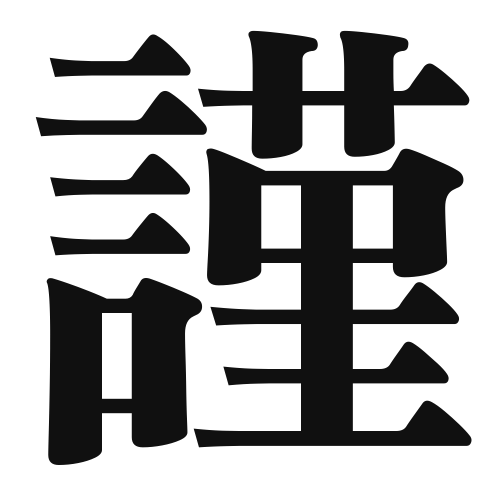1. Overview of Meaning
The kanji “謹” (kin) means “to be respectful” or “to be careful.” It conveys a sense of humility and sincerity, often used in contexts that require formality or reverence.
2. Formation and Radical
Formation of the Kanji: The kanji “謹” is a compound character, which means it is formed by combining different elements. It consists of the radical “言” (word) and the character “謹” itself, which relates to speech and carefulness.
Radical: The radical of “謹” is “言” (gen), which is associated with words and language, emphasizing the importance of careful speech in expressing respect.
3. Examples of Usage
Common Words and Phrases: Some common words that include “謹” are “謹賀新年” (kinga shinnen – New Year’s greeting) and “謹慎” (kinshin – prudence).
Example Sentences in Daily Conversation:
- 「謹んでお詫び申し上げます。」(I sincerely apologize.)
- 「謹賀新年、皆様のご健康をお祈り申し上げます。」(Happy New Year, I wish you all good health.)
4. Synonyms and Antonyms
Similar Kanji: A similar kanji is “慎” (shin), which also means to be careful or cautious, but it is more focused on self-discipline rather than respect.
Opposite Kanji: An antonym is “無礼” (burei), which means rudeness or disrespect, highlighting a lack of care or consideration in behavior.
5. Cultural and Historical Background
Relation to Japanese Culture: The kanji “謹” is often used in formal settings, such as New Year greetings and official documents, reflecting the Japanese value of respect and humility.
Proverbs and Idioms: One common phrase is “謹んで受け取ります” (I humbly accept), which is used to express gratitude and respect when receiving something.
